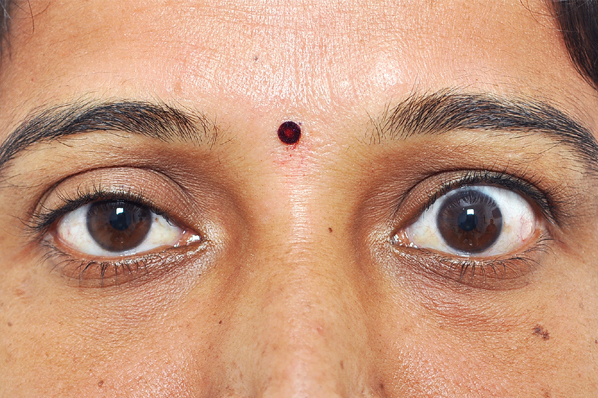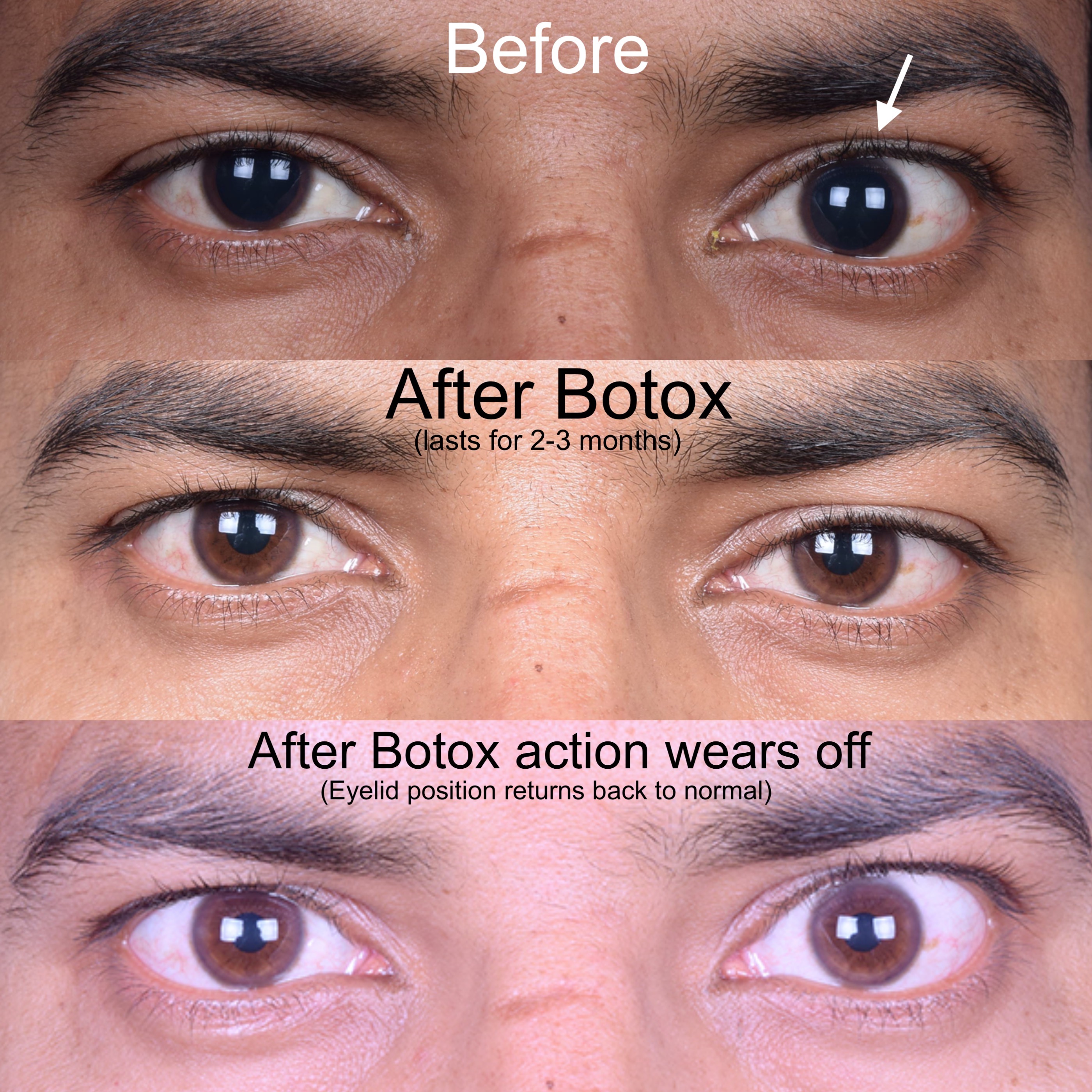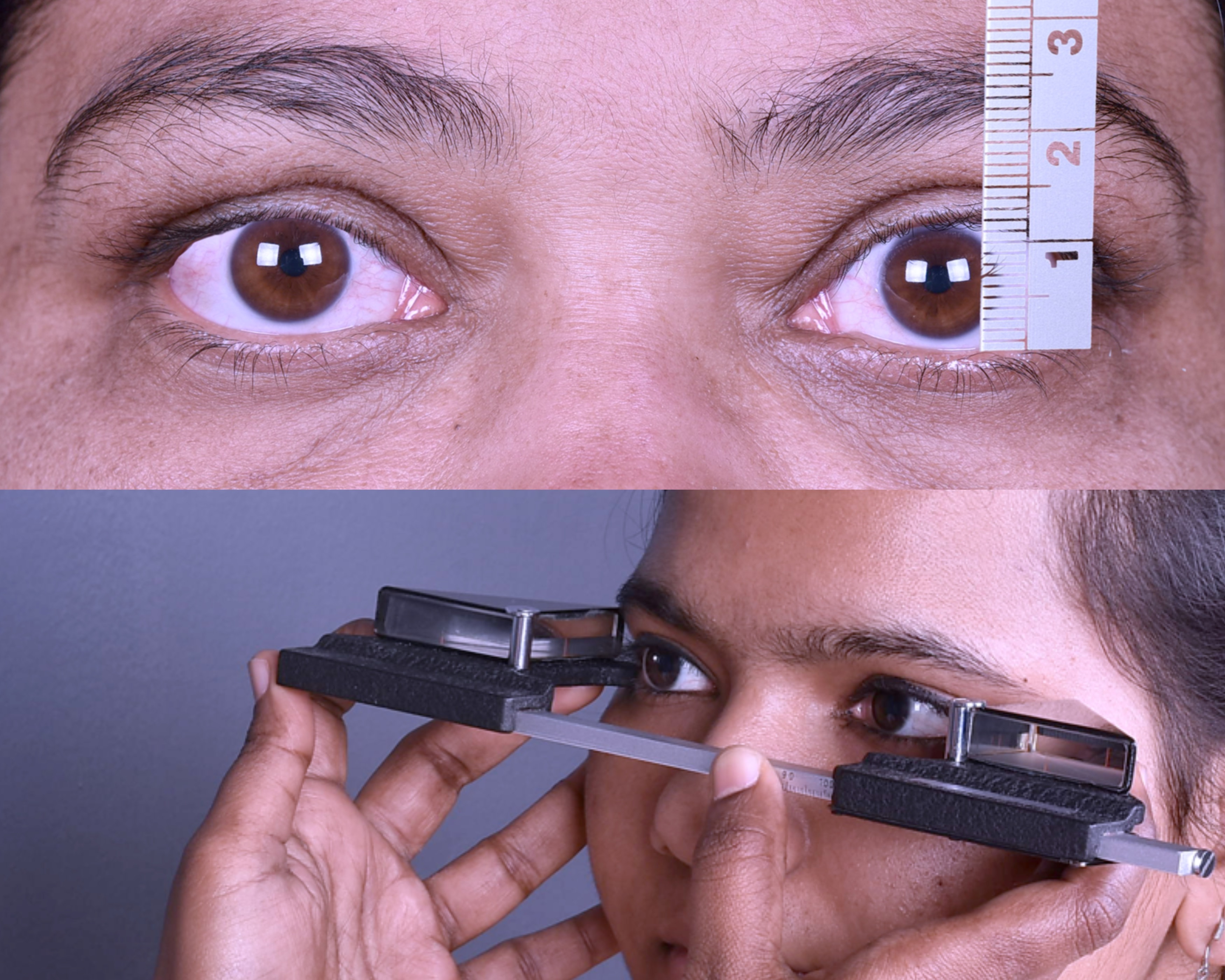Causes of asymmetric eye aperture  Asymmetric eye aperture is very common in thyroid eye disease. Although many patients have protruding eyes, quite a few have asymmetry purely due to abnormal eyelid height. It is of cosmetic concern, and can be corrected. The two eyes could look asymmetric if one of the eyelids is excessively open (eyelid retraction), or one of the eyelids is droopy. Retraction is more common in thyroid eye disease.
Asymmetric eye aperture is very common in thyroid eye disease. Although many patients have protruding eyes, quite a few have asymmetry purely due to abnormal eyelid height. It is of cosmetic concern, and can be corrected. The two eyes could look asymmetric if one of the eyelids is excessively open (eyelid retraction), or one of the eyelids is droopy. Retraction is more common in thyroid eye disease.
Treatment for asymmetric eye aperture If one or both eyelids are widely open (eyelid retraction), relaxing the eyelid muscle can correct it. There are two methods to correct this: temporary and permanent
Temporary correction (Botox injection)
 This is usually performed in the active stage of thyroid eye disease (during the first year). It is a quick 5 minute OPD procedure, where 2.5 of 5 units of Botox is injected into the eyelid muscle. The muscle relaxes within a week, and improvement will last for 2-4 months. It can be repeated as required.
This is usually performed in the active stage of thyroid eye disease (during the first year). It is a quick 5 minute OPD procedure, where 2.5 of 5 units of Botox is injected into the eyelid muscle. The muscle relaxes within a week, and improvement will last for 2-4 months. It can be repeated as required.
Permanent correction (surgery) There are two muscles that excessively lift the eyelid (Muller and Levator). Based on the severity of retraction, surgery is targeted to relax either of them, to obtain a permanent improvement in eyelid symmetry. The eyelid surgery is usually performed under local anaesthesia, as a daycare procedure. Final check-up (before you leave for your home city) is usually done 2 weeks from the date of the eyelid surgery.
Preparation for your surgery  During your consultation, we measure the aperture size which decides the severity of the lid retraction (mild, moderate or severe). In addition, we also measure the prominence of the eye. Finally, a few blood tests are mandatory for anaesthesia fitness.
During your consultation, we measure the aperture size which decides the severity of the lid retraction (mild, moderate or severe). In addition, we also measure the prominence of the eye. Finally, a few blood tests are mandatory for anaesthesia fitness.
Anaesthesia and Hospital stay The surgery is performed as day care, under local anaesthesia. Rarely, it may be done under short general anaesthesia. Hospital admission is not required. If both eyes require surgery, it can be done at the same time or with a gap of 1-2 weeks. Final check-up (before you leave to your home city) is usually done 1 or 2 weeks from the date of second eye surgery.
Follow-up visits Eyelid surgery for aperture difference is not a one-day process, and follow-up visits are important. The typical visit schedule is as follows: Before-Surgery check-up: Day 1 Surgery: Next day After-surgery check-1: Immediate next day of surgery in the morning between 8-9 am. After-surgery check-2: At 1 or 2 weeks, depending upon your convenience After-surgery check-3: At 2 or 3 months
Expected Side-effects The eyelid surgery for aperture symmetry is not an exact science. The disease has caused some irreversible changes in the eye function, and despite our best efforts, some expected results are possible.
Expected side effects of this surgery include swelling, bruising, redness of the eye, and watering for a variable period of 1-3 weeks. These settle in most cases.
IN 5% cases, the eyelid height may not rest at the ideal position, and additional touch-up may be required to make it better. This, when required is a 10-minute stitch adjustment, and is performed at 6-12 weeks after the surgery date.
Surgical time and recovery Eyelid surgery is performed as the third step in the surgical management of thyroid eye disease. On the day of surgery your eye will have a patch/bandage. Pain will be mild and is controlled with medications. Pain typically lasts for a 5-7 days. Stitches if any, are removed in 1-2 weeks. It is not possible to perform any critical work for 1 week, and hence rest is advised. Most patients are back to light work after 2 weeks. It is therefore advisable to not plan any important social events for 2-3 months from the date of surgery.
Will insurance cover the cost of surgery?
Health insurance will cover the costs of orbital decompression surgery for thyroid eye disease.
Before and After photos
